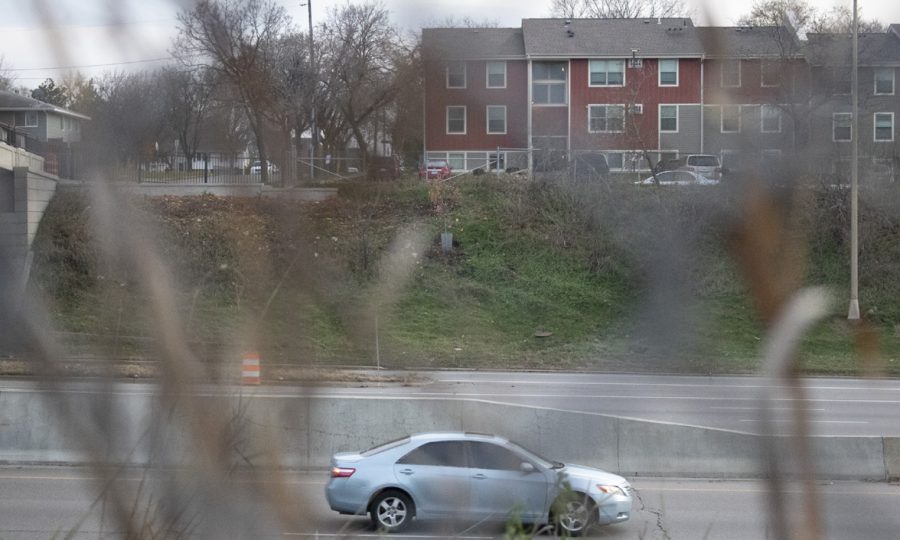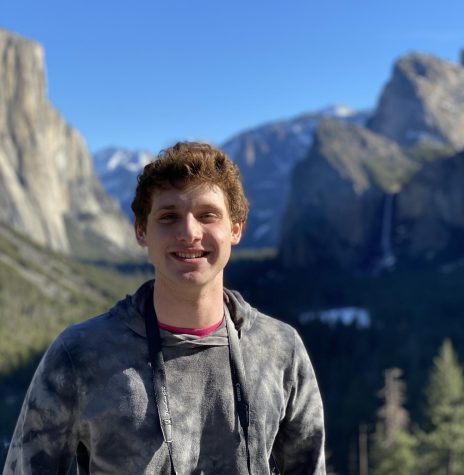Alex Burns talks “Rethinking I-94” for EnviroThursday
March 24, 2022
On Thursday, March 10, a lecture hall of students, faculty and staff listened to a presentation from Alex Burns, the policy coordinator of Our Streets Minneapolis, a nonprofit dedicated to advancing multimodal transit in the Twin Cities. Burns was invited to Macalester as part of the environmental studies department’s EnviroThursday event series. Burns discussed the history of the I-94 corridor in the Twin Cities and the current debate over the future of the massive freeway.
Burns began the talk by discussing the current state of the corridor.
“60 years [after construction], the pavement, the retaining walls, the bridges on it [I-94] are nearing the end of their useful life,” Burns said.
He noted that even with constant construction, the highway’s infrastructure will soon have to be replaced in its entirety. To prepare for this eventuality, the Minnesota Department of Transportation (MnDOT) announced the Rethinking I-94 project in 2015. The project gathered huge community interest that came to a head last year.
Many community organizations, including Burns’ own, Our Streets, have urged MnDOT to consider alternatives to the status quo. Within the last few weeks, Our Streets has given their own proposal, entitled the Twin Cities Boulevard. This idea goes further than the land bridge proposal that advocates in the Rondo neighborhood have suggested. The Twin Cities Boulevard would entirely remove the I-94 between downtown Minneapolis and downtown Saint Paul and replace it with surface streets and a linear park.
“In October of last year, Our Streets Minneapolis organized a sign-on letter with 29 organizations calling on the Minnesota Department of Transportation to change the project’s purpose… it was really laying the groundwork to perpetuate the status quo, and to rebuild the freeway for another 60 years. And we felt like that was unacceptable,” Burns said.
The Twin Cities Boulevard project, and indeed all of Rethinking I-94, is being framed by community organizers and activists as a social justice project. “What Interstate 94 should be is a reparative project that addresses the freeway’s harms,” Burns said.
To accomplish this, the Twin Cities Boulevard addresses three major points: first, replacing the freeway trench, second, returning the remaining freeway land to marginalized neighborhoods, and finally, repairing historic and ongoing harms to prevent gentrification and displacement. Our Streets’ goal is to have MnDOT officially endorse their Rethinking I-94 proposal.
Burns began explaining the triple point program by discussing how the Twin Cities Boulevard would repair historic harms initially caused by the construction of the freeway. He noted that I-94’s construction in the 1950s and 1960s displaced 24,000 people in Minneapolis and 6,000 people in Saint Paul, including nearly the entirety of the Rondo neighborhood. 80% of Black people in both cities at the time lived in the corridor of highway construction.
Burns also noted that the median income in the I-94 corridor today, $45,200, is lower than both the median incomes of Minneapolis, at $62,500, and Saint Paul, at $57,800. As such, the construction of the highway drastically altered the landscape of the Twin Cities’ BIPOC-majority neighborhoods.
“A common response that I get when I talk about this is [that] this is such a radical idea,” Burns said. “Building the freeway in the first place was extremely radical because it decimated entire neighborhoods and communities, thousands of homes and businesses to build this thing.”
Burns also framed the Twin Cities Boulevard as a matter of restoring public health to a region negatively impacted by pollution.
Burns pointed out that the I-94 corridor greatly exceeds benchmarks of air quality established by the Minnesota Pollution Control Agency. “Freeways are like these ribbons of poison for the communities that live near them,” Burns said.
Pollution in the I-94 corridor has massive negative effects on health of those who reside within it. Test scores of students who go to school in the corridor are lower, and asthma hospitalizations surrounding I-94 are three times the state average and two times the county average.
I-94 also shows huge disparities in transportation access. Burns explained that removing the freeway and replacing it with the Twin Cities Boulevard would eliminate these problems. Currently, while 7% of Twin Cities residents do not own a car, that proportion is much higher in the I-94 corridor, where it is 28%.
Further, Burns pointed out that the people most harmed by the corridor use it the least. Replacing the highway with multimodal transit options like bus lanes, bike lanes, as well as surface streets, as seen in the Twin Cities Boulevard, would extend many more transit options to the people who live in the corridor.
“We’re not taking away options, we’re adding options,” Burns said.
Finally, Burns addressed how removing the freeway would impact traffic. He explained how expanding highways induces demand and ultimately worsens traffic. Burns referenced Houston’s Katy Freeway, where its 26 lanes ultimately attracted even more traffic to the Houston metro area.
Burns then pointed out that traffic has always diminished when highway laneage is reduced. Burns cited several examples of successfully implemented or planned-out highway removals, ranging from Duluth, Minn. to Seoul, South Korea.
Burns also addressed the alternative option of building a land bridge over the highway, saying that the only way to secure every possible benefit is to remove the freeway; anything else would just be mitigation.
Burns concluded by imploring the crowd to get themselves involved in the process. He asked listeners to sign the Twin Cities Boulevard petition, send emails to MnDOT, volunteer in Our Streets’ canvasses of the I-94 corridor, and finally, complete MnDOT’s survey about Rethinking I-94.
“This has to be something that comes from public pressure and community organizing,” Burns concluded.
Our Streets Minneapolis’ ultimate goal is to have MnDOT include the Twin Cities Boulevard in their project options, with construction to start in 2027.














